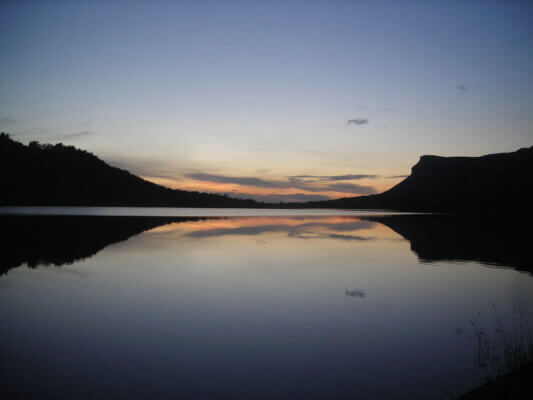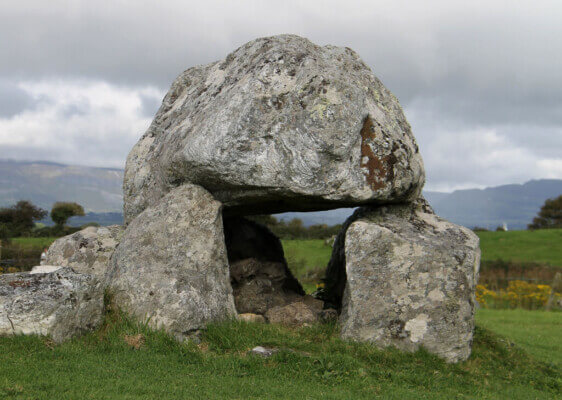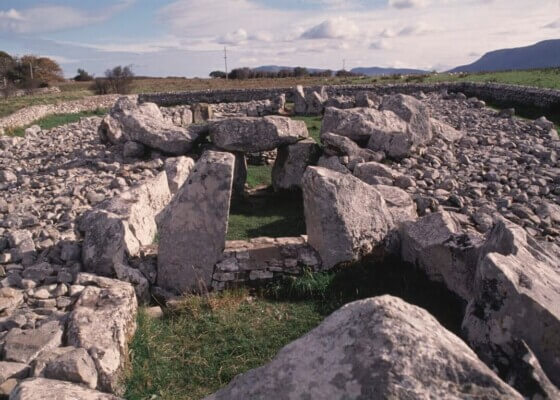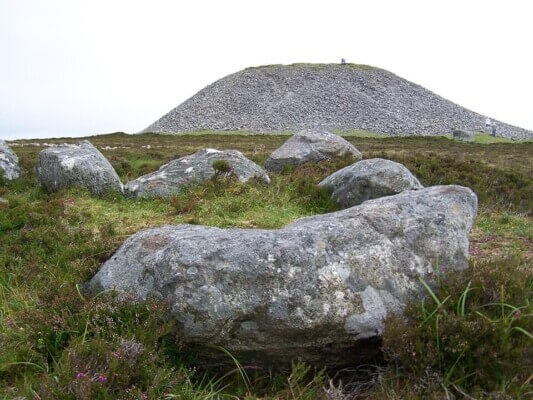A chance discovery of prehistoric tools found at Glencar Lake in County Sligo has added to the region’s rich archaeological heritage.
This news page contains affiliate links and I may earn compensation when you click on the links at no additional cost to you.
During the summer of 2020, Dr. Marion Dowd, a local archaeologist and lecturer at the Sligo Institute of Technology, along with her son and another family who were picnicking near the lake, discovered an abundance of chert, a sedimentary rock that was used in ancient times to make stone tools.

The prolonged dry weather in Ireland at the beginning of June and the lowering of the lake’s water levels likely contributed to the amazing find, which totaled 930 pieces.
The site is now totally submerged again.
It also revealed what is known as a “knapping floor,” which is a place where people came to knap (shape) chert and make stone tools.
The stones, when turned into tools, would have been used for gutting and cleaning fish, woodwork, basket making, and even preparing food.
According to archaeologist Dr. James Bonsall, most of what was found was waste from the manufacture of the tools, but some finished stone tools also survived and are now being stored at the National Museum of Ireland.

The people who lived here would have come to Glencar Lake for fishing, boating, and washing, perhaps as long ago as the Mesolithic Age (8,000 B.C. to 4,000 B.C.).
During the period, these hunter-gatherers would have hunted large game, exploited seasonal fruits, nuts, and berries, and fished.
Salmon, sea trout, and brown trout are common in Glencar Lake, which extends into County Leitrim.

By clicking on the Amazon images below, I may earn a small commission from the Amazon Associates Program, but only if you decide to buy something on the site. However, you will not incur any additional costs by doing so.
Dowd, the author of “The Archaeology of Caves in Ireland,” said the site is one of 98 knapping floors around Ireland and actually the second one to be discovered in County Sligo.
If you’re interested in learning more about Sligo’s archaeological heritage, there are four locations that are well worth visiting.
Take a Tour of Northwest Ireland
They include:
- Carrowmore Megalithic Site – this is the largest collection of megalithic tombs in Ireland. There are over 60 tombs here.

One of the remains from the Megalithic period at the Carrowmore Megalithic Cemetery in Sligo. Photo: Alison Crummy for Failte Ireland. - Carrowkeel Burial Chambers – consists of 22 cairns dating from about 3,800 B.C.

Carrowkeel, an ancient burial site in Co. Sligo. Photo courtesy of Carrowkeel Megalithic Complex. - Creevy Keel Court Tomb – one of the best examples of a court tomb in Ireland. Dates to about 4,000 B.C., making it one of the world’s oldest monuments.

The Creevykeel Court Tomb in Co. Sligo. Photo: - Knocknarea – the iconic mountain with a large cairn at its summit, believed to be the burial place of the mythical Queen Maeve of Connacht.

Queen Maeve's Cairn on top of Knocknarea in Co. Sligo. Photo: Baca12 – Own work, CC BY-SA 4.0, https://commons.wikimedia.org/w/index.php?curid=43138612
Within a kilometer of the finding of the prehistoric tools at Glencar Lake is the Glencar Waterfall, made famous by William Butler Yeats in his poem, “Stolen Child.”
The waterfall is actually in Co. Leitrim.
Be sure to stop by the Tea Shed for some refreshments after you visit the beautiful waterfall.

https://www.flickr.com/photos/145574498@N03/
https://creativecommons.org/licenses/by-nc-nd/2.0/
Also within easy reach of Glencar Lake is the Devil’s Chimney waterfall (also commonly referred to by its Irish name, “Sruth in Aghaidh An Aird” meaning “stream against the height”).
The waterfall is actually the tallest in Ireland and higher than the more well-known Powerscourt Waterfall on the Powerscourt Estate in Co. Wicklow.
The Devil’s Chimney is a popular spot for hiking and there is a trail that will give you access to the base of the falls.





